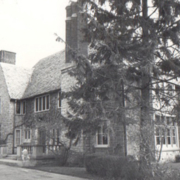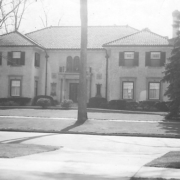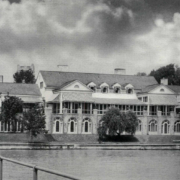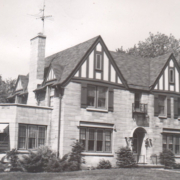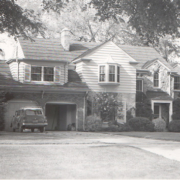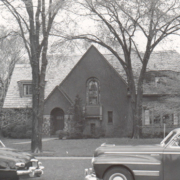Historical Architecture of Grosse Pointe – 16632 E. Jefferson
Last week we presented the story of one of Grosse Pointe’s lost estates – 910 Edgemont – a once beautiful Italian Renaissance Revival style home completed in 1925, allegedly for Walter & Edith Scotten. Our files list the architect as George V. Pottle; however, this has not been verified by blueprints. 910 Edgemont was raised in April 1995.
This week we head to an iconic home -16632 E. Jefferson. Located on the shores of Lake St. Clair, it was commissioned in 1926, by Detroit Industrialist Edgar Woodbury Bowen. It was designed by esteemed architect Wallace Frost.
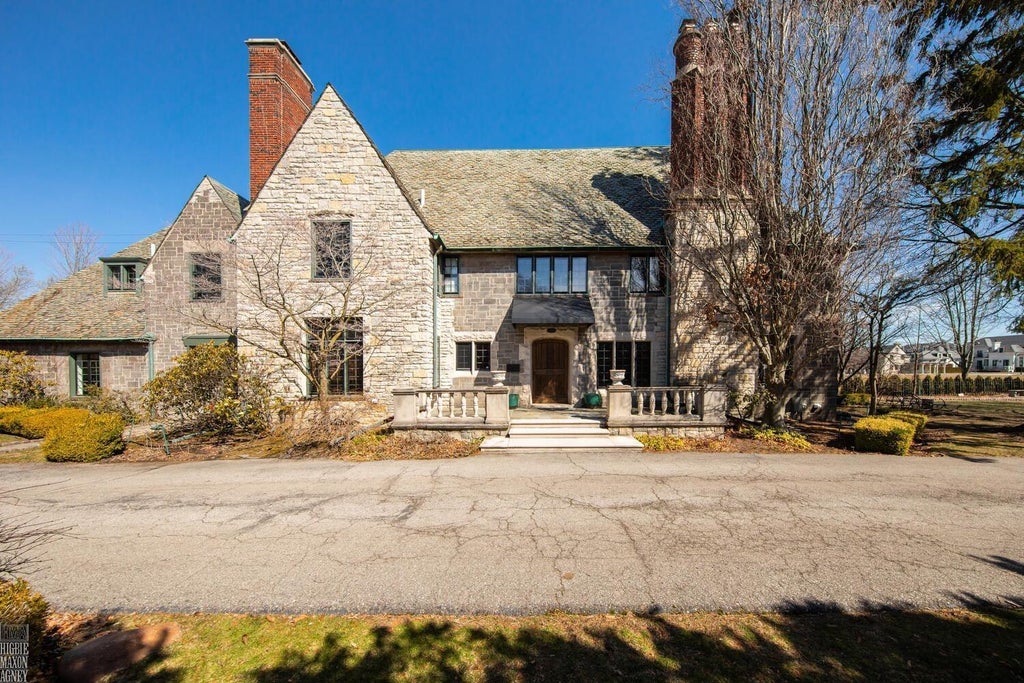
16632 E. Jefferson is an 8,140 sq ft stately French Normandy style home situated on a private lane (adjacent to Jefferson Court) on nearly one acre of land. It is one of the finest examples of French Normandy architecture in the Grosse Pointe communities. The French Normandy style had become popular in the U.S shortly after the First World War when French chateaus were a “model of inspiration”. Typical traits of this approach include a steeply pitched slate roof, stone or brick façade, an arched opening to the main entrance, tall flat chimneys, along with an asymmetrical configuration to the home. The approach was particularly popular in Grosse Pointe during the 1920’s. Several noted architects selected to design homes of this style during this era include Wallace Frost, Hugh T. Keys, D. Allen Wright, Hancock & Butler, Alvin E. Harley, and Marcus Burrowes to name but a few.

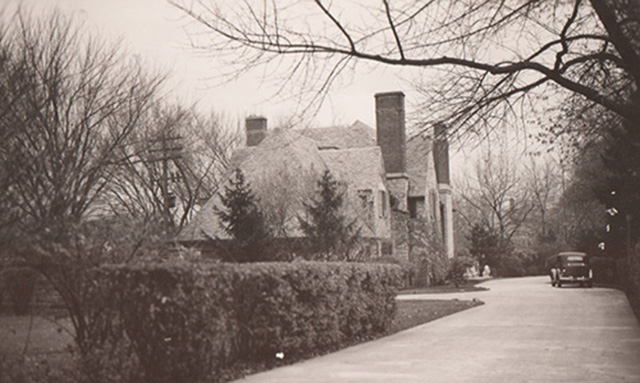
The exterior of 16632 E Jefferson is sublime. The property is constructed of stone, with a steeply pitched slate roof, a wide, flat brick chimney, with delicate limestone detailing around the front door and first floor windows. Arguably the most dominant feature is the two-story gable on the left-hand side of the property, while an exquisite feature is the low limestone balustrade that provides a framework to the front terrace.

Upon entering the property, a spacious 14’ x 16’ sq ft stone floored foyer and a grand sweeping circular staircase dominate the entrance to the first floor. The main floor also features an impressive 27’ x 20’ sq ft living room with a large bay window, a 17’ x 21’ sq ft dining room with walls and ceiling clad in mahogany-stained wood, and a 15’ x 15’ sq ft library – all of which have oversized stone fireplaces. The main floor, when first completed, also had a kitchen with a butler’s pantry, and an adjoining service dining room. Meanwhile the garden room opens to a small terrace via French doors that are framed by three striking large stone arches on the rear elevation. Upstairs, the second floor once had six bedrooms; the master suite was 16’ x 21’ sq ft, had a fireplace and a large bay window. The second floor also once contained a servant’s wing with two additional bedrooms, service stairs, along with a 5’ x 6’ sq ft elevator that ran from the 1st floor to the 1,500 sq ft, 3rd floor.
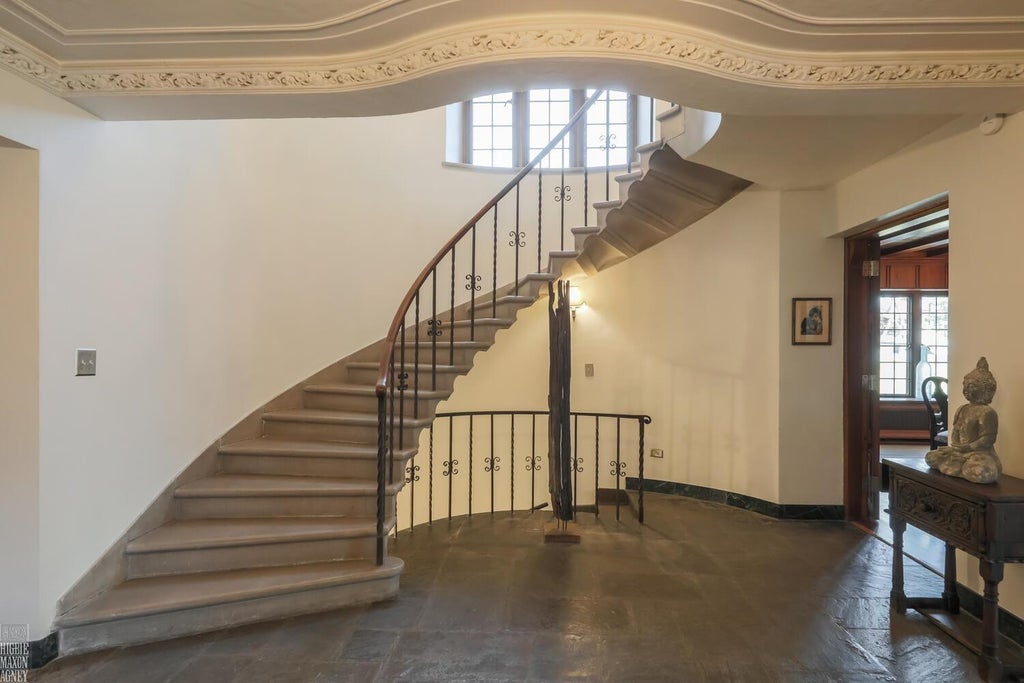

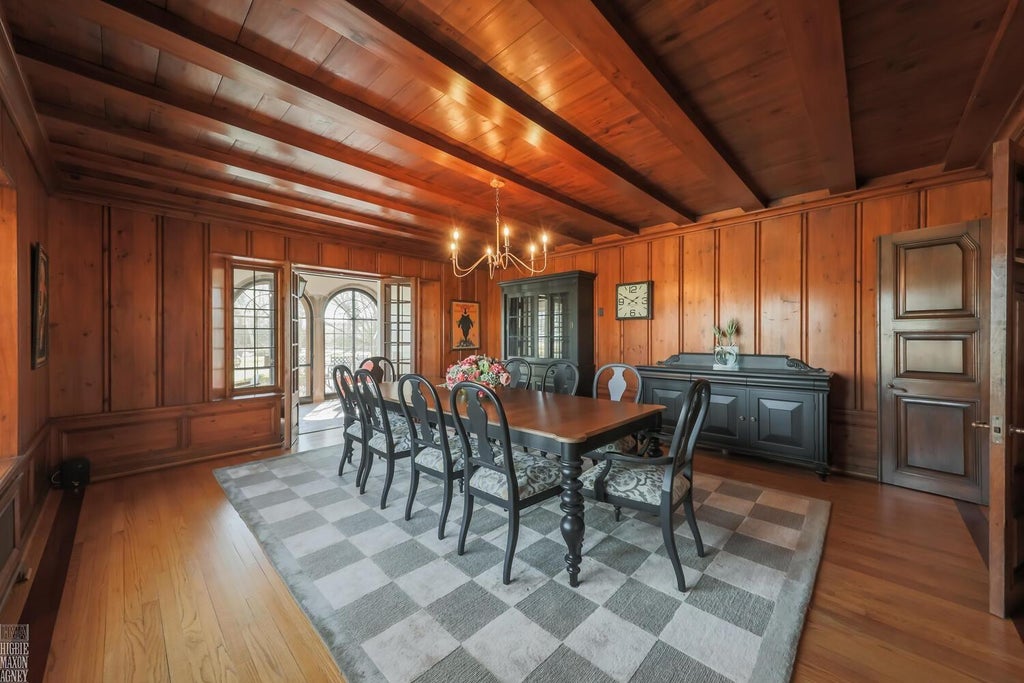
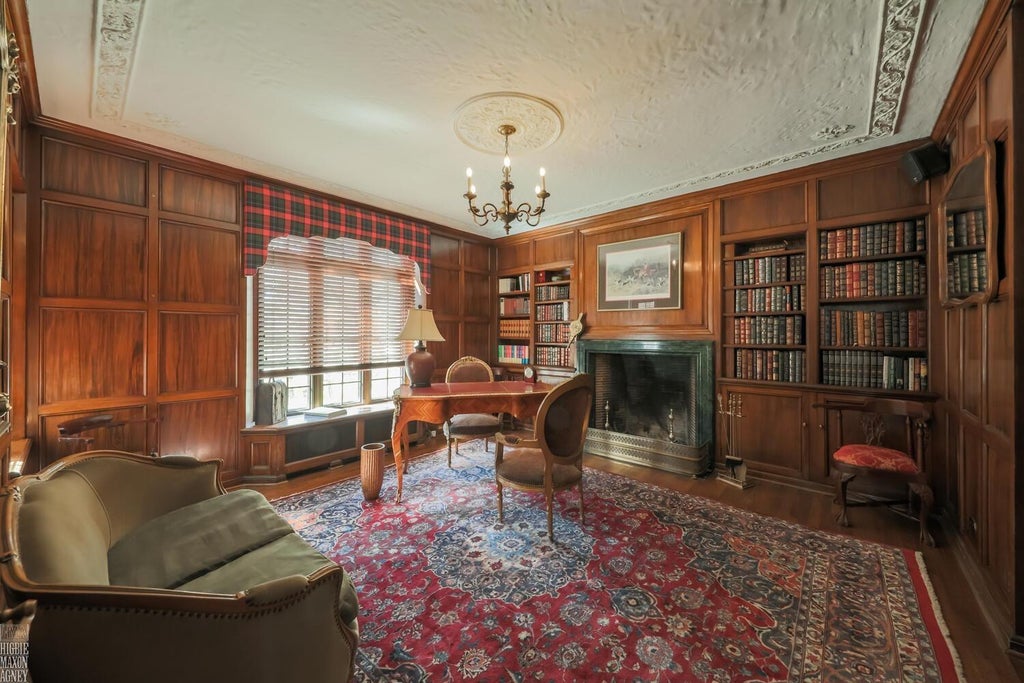
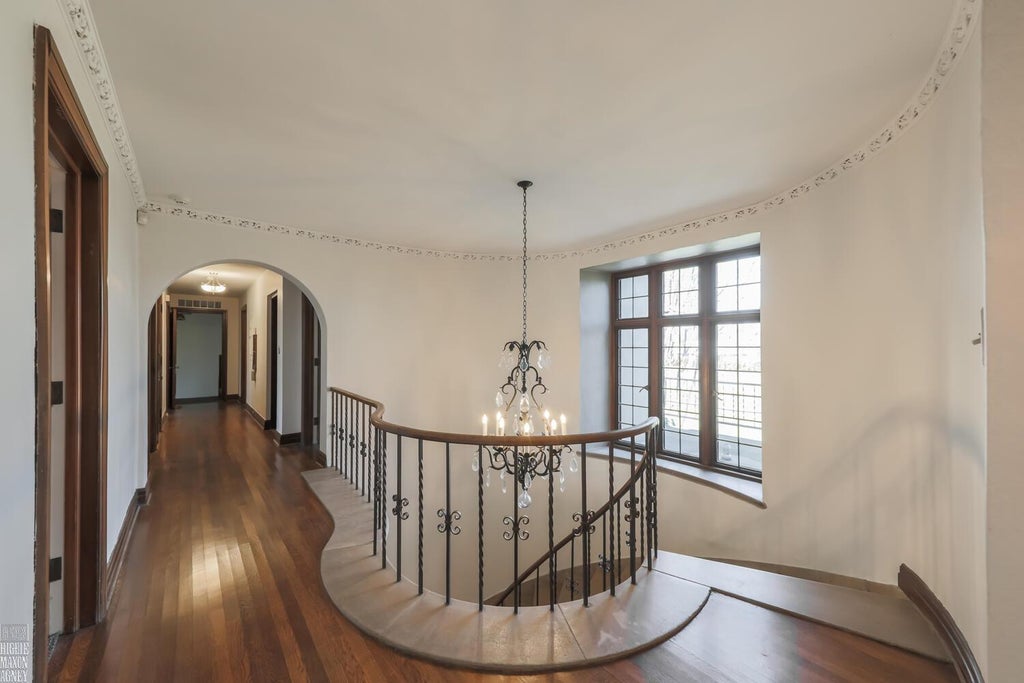
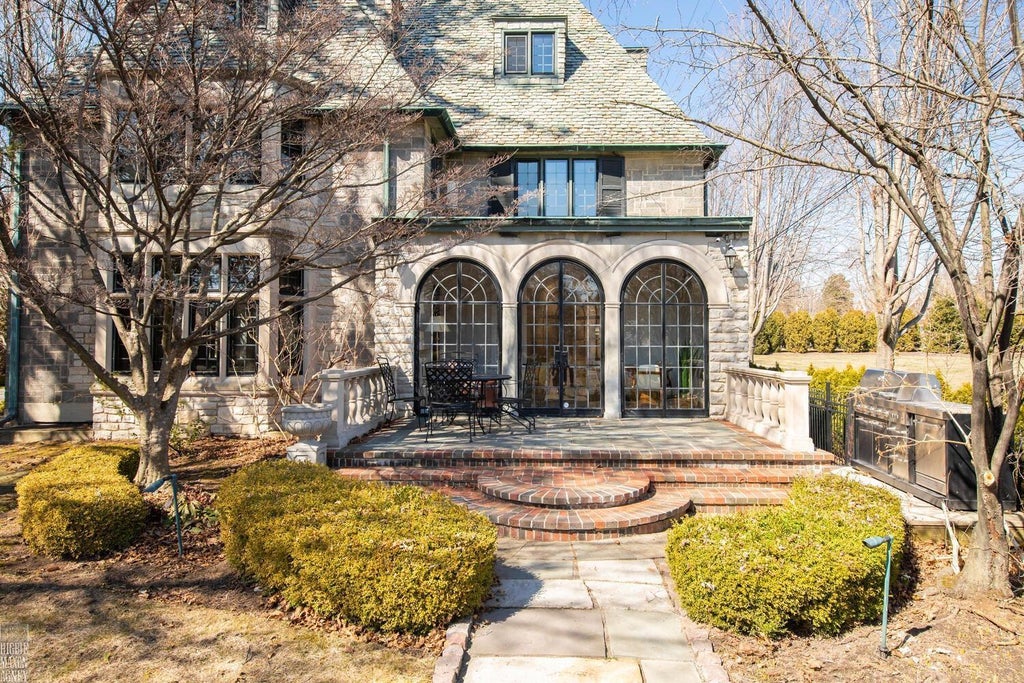
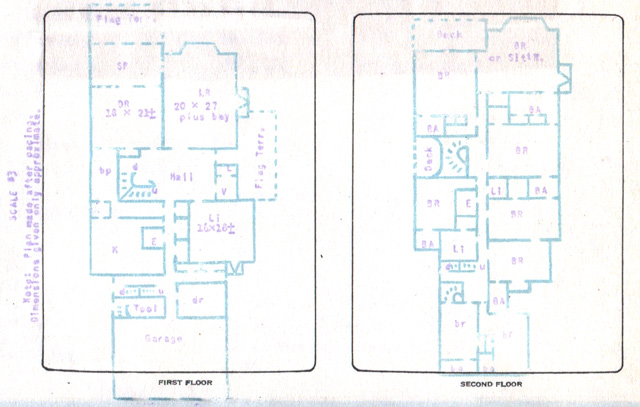
Based on an article by Judy Rose in the Detroit Free Press (July 18, 2020) she explains how Wallace Frost designed two houses on the deep piece of land for Edgar Bowen (an industrialist) and his brother Julian. It is alleged the brothers flipped a coin to decide whose house would be located closest to the water. Julian Bowen won.
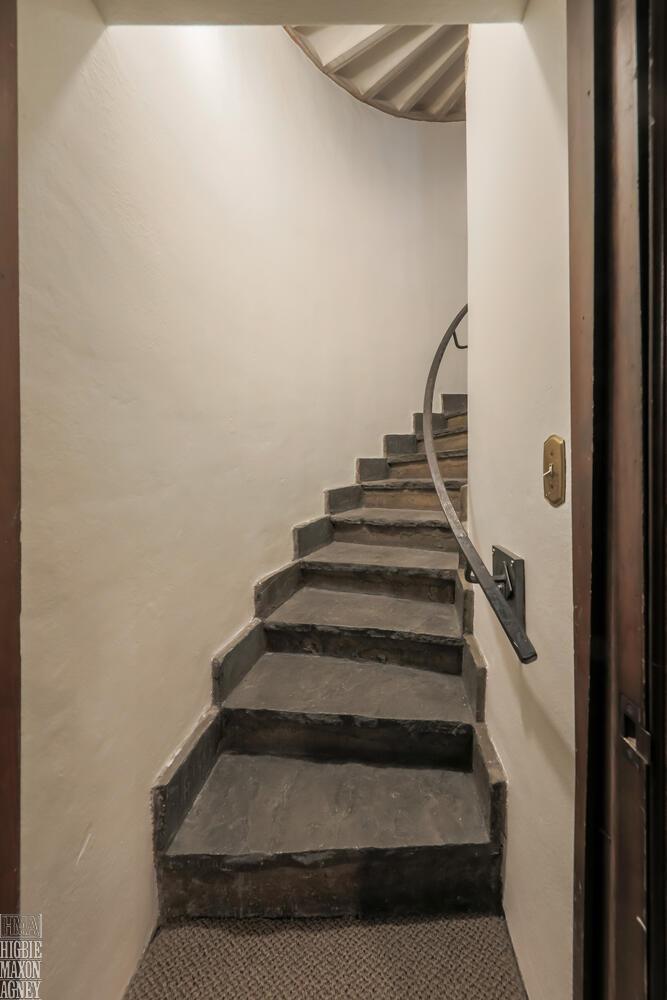
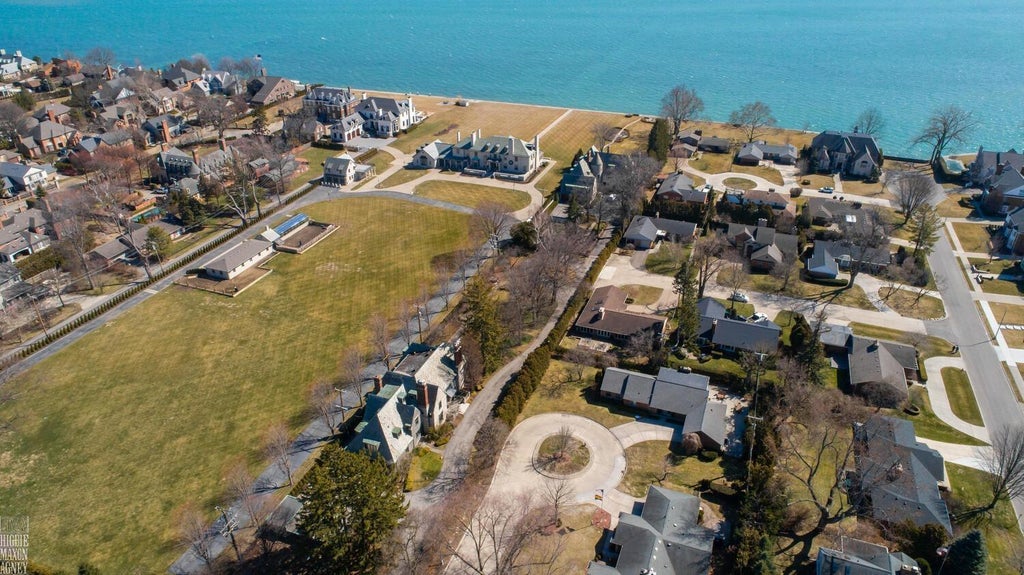
Edgar W. Bowen, the elder brother, was born in Detroit in 1886, and graduated from the University of Michigan in 1910. He became vice president and secretary of The Ferry-Morse Seed Company (his father was president of the company) and he was also widely known in banking circles. During his career he held many high-profile positions including president of the American Seed Trade Association, he was a member of the board of The Standard Accident Insurance Company and the McGregor Fund, while was also a former director of the Detroit Trust Company. In 1914, he married Helen Gable and together they had three children. During the 1930’s, tragically both brothers died from heart disease within two years of each other. Julian Bowen passed in 1933, and Edgar passed in 1935. Source: Findagrave.com
16632 E. Jefferson was designed by the prolific architect Wallace Frost. During his career he designed over 40 homes in and around Metro Detroit. Despite working predominantly on the west side of the city Frost designed at least 10 significant homes in Grosse Pointe that spanned several architectural styles and decades – 1920’s through to the 1950’s. His projects include:
- 42 Hendrie Lane (1926)
- 16632 E. Jefferson (1926)
- 16628 E. Jefferson (1927)
- 15324 Windmill Pointe (1927)
- 41 Hendrie Lane (1927)
- 242 Lewiston (1929)
- 280 Vincennes (1954)
- 515 Lake Shore (1956)
At the beginning of his career Wallace Frost was located at a Naval Air Force base, Washington D. C, designing hangers for military instillations. It was here that he met Albert Kahn. It is reported Kahn had a great admiration for Frost’s work, and he allegedly asked Frost to join him in Michigan after the war. Frost moved to this area in 1919, settling in Birmingham in 1921. It is believed Mr. Frost originally served as Kahn’s personal assistant and collaborated with Kahn on some of his most prominent projects, including the Detroit Public Library, and the Fisher Building. In 1926, Wallace Frost set up his own architectural firm, focusing on residential projects in around the suburbs of Detroit. He quickly became associated with creating midsize cottage style houses, with exquisite detailing, elegant woodwork, and an abundance of light. Much of his work centered on French, Italian, and English architectural influences.
Between 1932 and 1933, Wallace Frost left Michigan and travelled to Europe, working predominantly in Florence, Italy. On his return to the United States, he moved to Southern California. During this time, he transitioned from his traditional style of architecture to focus more on the modern Californian style. This included his own home in the Montecito Valley, near Santa Barbara.
In 1939, he returned to Birmingham, MI, where he would practice until 1961. With him he brought his modern architectural approach that is evident in two of his houses in Grosse Pointe he completed during the 1950’s – 515 Lake Shore and 280 Vincennes. Wallace Frost passed in 1962.
16632 E Jefferson is not only a wonderful statement of Frost’s skill as an architect, but is a superb example of the French inspired homes that began to grace the Grosse Pointes during the 1920’s.
*Photos courtesy of the Higbie Maxon Agney archives unless stated.
** Research, information, and data sources are deemed reliable, but accuracy cannot be fully guaranteed.
Written by Katie Doelle
Copyright © 2023 Katie Doelle

